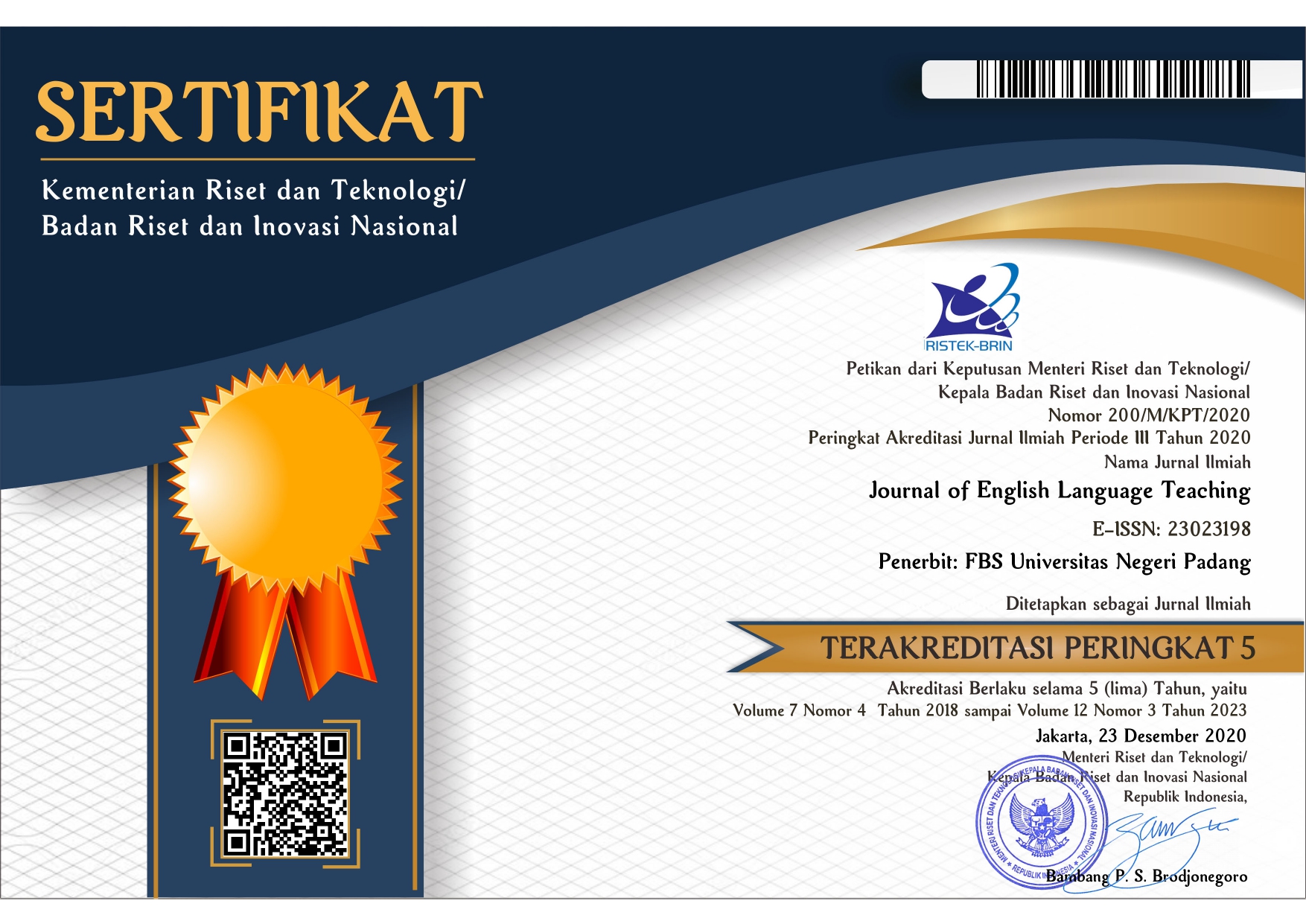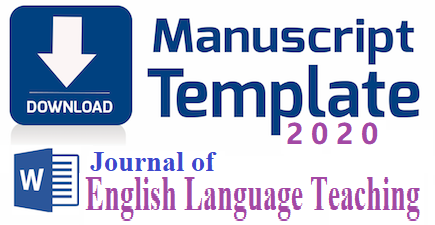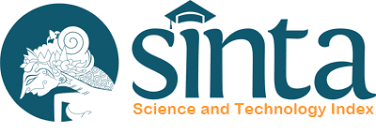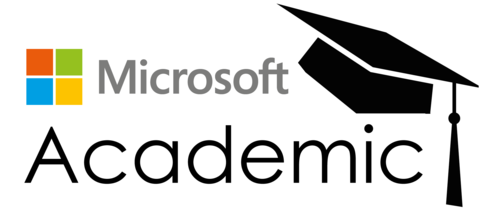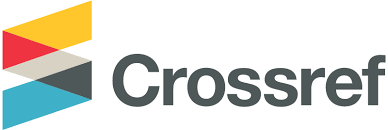The Alignnment of Activities in the Textbook Aku Cinta Bahasa with the Level of Students' Cognitive Development
 ), An Fauzia Rozani Syafei(2),
), An Fauzia Rozani Syafei(2), (1) Universitas Negeri Padang
(2) Universitas Negeri Padang
 Corresponding Author
Corresponding Author
Copyright (c) 2024 Tri Fajar Maulana
DOI : https://doi.org/10.24036/jelt.v13i4.131276
Full Text:
 Language : en
Language : en
Abstract
References
Bjorklund, D. F. (2022). Children′s thinking: Cognitive development and individual differences. Sage publications.
Bloom, B. S., Engelhart, M. D., Furst, E. J., Hill, W. H., & Krathwohl, D. R. (1956). Taxonomy of educational objectives: The classification of educational goals. Handbook 1: Cognitive domain (pp. 1103-1133).
Deci, E. L., & Ryan, R. M. (2013). Intrinsic motivation and self-determination in human behavior. Springer Science & Business Media.
DeKeyser, R. (Ed.). (2007). Practice in a Second Language. Cambridge University Press.
Ebadi, S., & Mozafari, V. (2016). Exploring Bloom’s revised taxonomy of educational objectives in TPSOL textbooks. پژوهش نامه آموزش زبان فارسی به غیر فارسی زبانان,. https://jtpsol.journals.ikiu.ac.ir/article_995.html
Eslaminejad, T., & Saeid, N. (2017). Analysis of English Language Textbooks of the Iran Language Institute In Order to Specify the Student’s Involvement Index of the Teaching Learning Process. Modern Applied Science. https://doi.org/10.5539/mas.v11n4p91
Estaji, M., & Nafisi, M. (2014). Multiple Intelligences and Their Representation in the EFL Young Learners’ Textbooks. International Journal of Research Studies in Language Learning. http://dx.doi.org/10.5861/ijrsll.2014.731
Keller, J. M. (2009). Motivational design for learning and performance: The ARCS model approach. Springer Science & Business Media.
Nikolov, M. (1999). ‘Why do you learn English?’‘Because the teacher is short.’A study of Hungarian children’s foreign language learning motivation. Language Teaching Research. https://doi.org/10.1177/136216889900300103
Nunan, D. (2004). Task-based language teaching. Cambridge University Press.
Prabowo, J. (2018). Project Approach; A Way how to Trigger Children Expose and Explore Their Skills in Learning a Language. INSANIA : Jurnal Pemikiran Alternatif Kependidikan. https://doi.org/10.24090/insania.v23i1.2007
Rahayu, R., Rosita, R., Rahayuningsih, Y. S., Hernawan, A. H., & Prihantini, P. (2022). Implementasi Kurikulum Merdeka Belajar di Sekolah Penggerak. Jurnal Basicedu. https://dx.doi.org/10.31004/basicedu.v6i4.3237
Shin, J. K. (2013). Teaching young learners English. Heinle & Heinle Pub.
Spratt, M., Pulverness, A., & Williams, M. (2011). The TKT Course Modules 1, 2 and 3. Cambridge university press.
Sweller, J. (1988). Cognitive Load Theory During Problem Solving: Effect on Learning. COGNITIVE SCIENCE: A Multidisciplinary Journal, 12(2), 257-285.
Tan, K. J., Ismail, Z., & Abidin, M. (2018). A comparative analysis on cognitive domain for the Malaysian primary four textbook series. EURASIA Journal of Mathematics, Science and Technology Education. https://doi.org/10.29333/ejmste/82625
Tomlinson, B. (Ed.). (2011). Materials development in language teaching. Cambridge University Press.
Tomlinson, B. (Ed.). (2023). Developing materials for language teaching. Bloomsbury Publishing.
Larson, R. W., and Richards, M. H. (1991). Boredom in the middle schools: blaming
schools versus blaming students. Am. J. Educ. 99, 418–433. doi: 10.1086/443992
 Article Metrics
Article Metrics
 Abstract Views : 25 times
Abstract Views : 25 times
 PDF Downloaded : 15 times
PDF Downloaded : 15 times
Refbacks
- There are currently no refbacks.
Copyright (c) 2024 Tri Fajar Maulana

This work is licensed under a Creative Commons Attribution-NonCommercial 4.0 International License.

